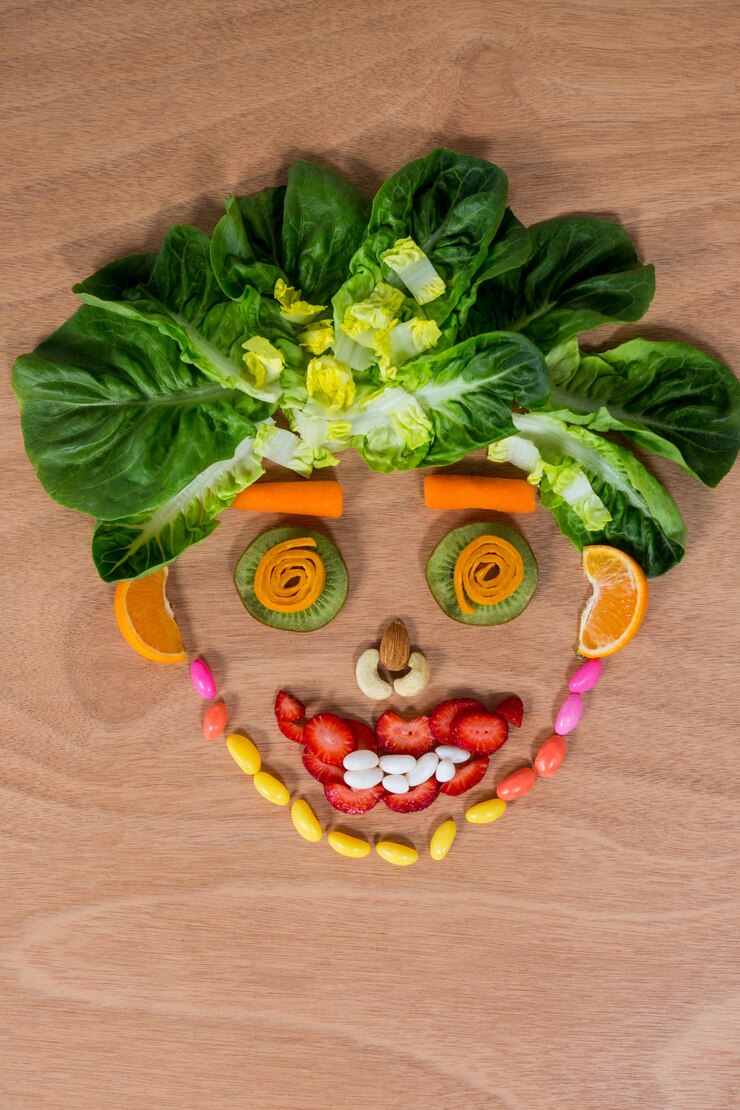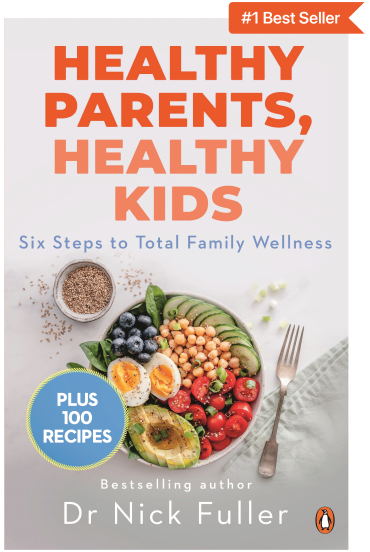Simple Ways to Make Vegetables Taste Better for Kids

Dr Nick Fuller
Leading Obesity Expert at the University of Sydney and founder of Interval Weight Loss.

Let’s be real. Convincing kids to eat vegetables can feel like trying to sell broccoli at a lolly shop. But taste is a huge factor. If it tastes good, kids are way more likely to eat it.
Research shows that repeated exposure, fun presentation, and taste-boosting strategies can significantly increase veggie intake in children. In other words, it’s not just what you serve, it’s how you serve it.
Here are 10 tasty, kid-friendly ways to make veggies go down a whole lot easier.
Energise Your Child with the Right Veggies at Mealtime
If your child’s energy levels seem low, picky eating might be a factor, especially when vegetables are left off the plate. Healthy Parents, Healthy Kids by Dr Nick Fuller, Australia’s leading childhood obesity expert, provides practical strategies for expanding your child’s vegetable intake. Adding colourful, nutrient-rich veggies to meals helps kids stay energised, focused, and strong. Plus, it’s a win for their growth and development!
Ready to make mealtimes easier and energise your child with more veggies? Grab your copy of Healthy Parents, Healthy Kids today!
10 Ways To Make Vegetables Taste Better For Kids
Making vegetables taste better for kids is all about getting creative and finding tasty combos. It’s not about hiding the veggies, but making them fun and exciting for their taste buds. These 10 ideas will turn veggies into a yummy part of your kid's meals!
Add cheese or a light sauce
A sprinkle of grated cheddar or a drizzle of cheese sauce can work wonders. Think cauliflower cheese or broccoli with parmesan. It adds creaminess and masks any bitterness, and most kids already love cheese. A study found that pairing veggies with a liked flavour (like cheese) increases children’s willingness to eat them.
Roast with herbs and olive oil
Raw or steamed can be a bit bland for little taste buds. Roasting veggies brings out their natural sweetness and gives them a lovely crispy edge. Add a pinch of herbs like rosemary or thyme and a splash of olive oil for that roasted magic. Roasted carrots, pumpkin, and sweet potato are often hits, especially when they start to caramelise.
Mix into pasta or noodles
Pasta is basically a delivery system for veggies if you do it right. Stir finely chopped or grated vegetables into a pasta sauce, lasagne, or stir-fried noodles. Think zucchini in bolognese, spinach in pesto, or capsicum in stir-fry.
Serve with a dip
Kids love to dip things—it’s half the fun. Serve sliced carrots, cucumbers, or cherry tomatoes with hummus, yoghurt dip, or even tzatziki. The extra flavour makes veggies more exciting. According to a study, dips helped preschoolers eat vegetables they would otherwise reject.
Add to smoothies
Yes, smoothies! Toss in a handful of spinach, cooked carrot, or steamed cauliflower with fruit, milk, and yoghurt. When blended with banana, mango or berries, the veggie taste is barely noticeable. Research found that fruit-based smoothies can be an effective (and tasty) way to increase veggie intake in fussy eaters.
Looking for some delicious smoothie recipes? Check this article out for tasty and nutritious ideas your little one will love!
Use fun shapes or cutters
Presentation matters. Use cookie cutters to turn cucumbers into stars or carrots into hearts. When food looks fun, it feels more like play and less like pressure.
This simple trick taps into the psychology of food appeal. Bright colours and interesting shapes make kids more curious and willing to try.
Combine with their favourite foods
Got a pizza fan? Add mushrooms or capsicum on top. Love burgers? Try a veggie patty or some shredded lettuce and tomato inside. Combining veggies with familiar, loved meals reduces resistance. It’s a small step that builds positive associations, and hey, even a single lettuce leaf counts.
Top with a sprinkle of seasoning
Sometimes, all it takes is a dash of flavour. Try garlic powder, paprika, a pinch of parmesan, or even nutritional yeast. These add-ons can turn plain steamed veg into something way tastier. Seasonings also help disguise any bitterness in green veg like Brussels sprouts or kale.
Try veggie-loaded muffins or fritters
Savoury muffins and fritters are great vehicles for hidden veggies. Think corn and zucchini fritters, carrot muffins, or spinach and cheese scrolls.
Offer with a sweet glaze or honey drizzle
A little sweetness goes a long way, especially with naturally bitter vegetables. Try roasting carrots or parsnips with a touch of honey or maple syrup. It brings out their sweetness and makes them more appealing. Just a drizzle is enough to shift the flavour balance without turning it into dessert.
Struggling to get your child to eat their greens? Check out this article for clever ways to sneak more veggies into meals and make mealtime a bit easier.
Summing Up
Helping kids enjoy their vegetables doesn’t mean resorting to trickery or power struggles. With the right flavours, textures, and a little creativity, veggies can be something your child actually wants to eat.
Remember, taste matters. And with these 10 flavour-boosting ideas, you’re not just making vegetables taste better—you’re setting up healthy habits for life.
Stay informed with fresh tips, expert guidance, unique deals, and tailored support!
Meet Dr Nick Fuller
My Story
As a father, I know first-hand that raising healthy and happy children is tricky. Children are fussy, particularly at the end of the day when they are shattered. We also live in a society where companies seek to profit from what we feed our kids; incorrect and damaging advice is pushed on us and marketed towards our children, and we have no time.
But with these recipes and resources, you and your children can enjoy simple and well-founded food and lifestyle choices for lifelong health.

About Dr Nick Fuller
Dr Nick Fuller is the founder of Interval Weight Loss and is a leading obesity expert at the University of Sydney with a Ph.D. in Obesity Treatment. Dr Fuller is also the author of three best-selling books and his work been published in top ranked journals in the medical field, including JAMA, Lancet and American Journal of Clinical Nutrition.
